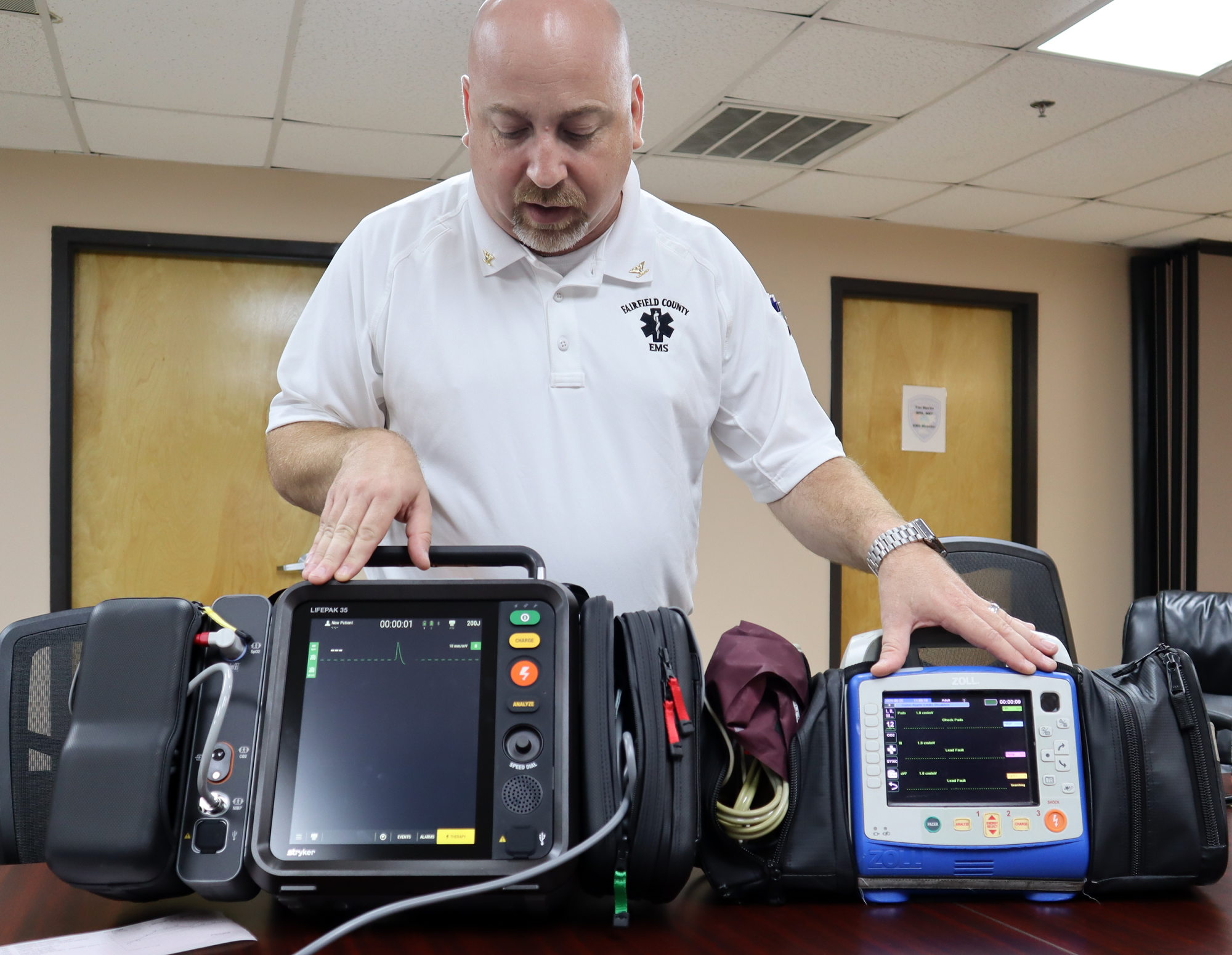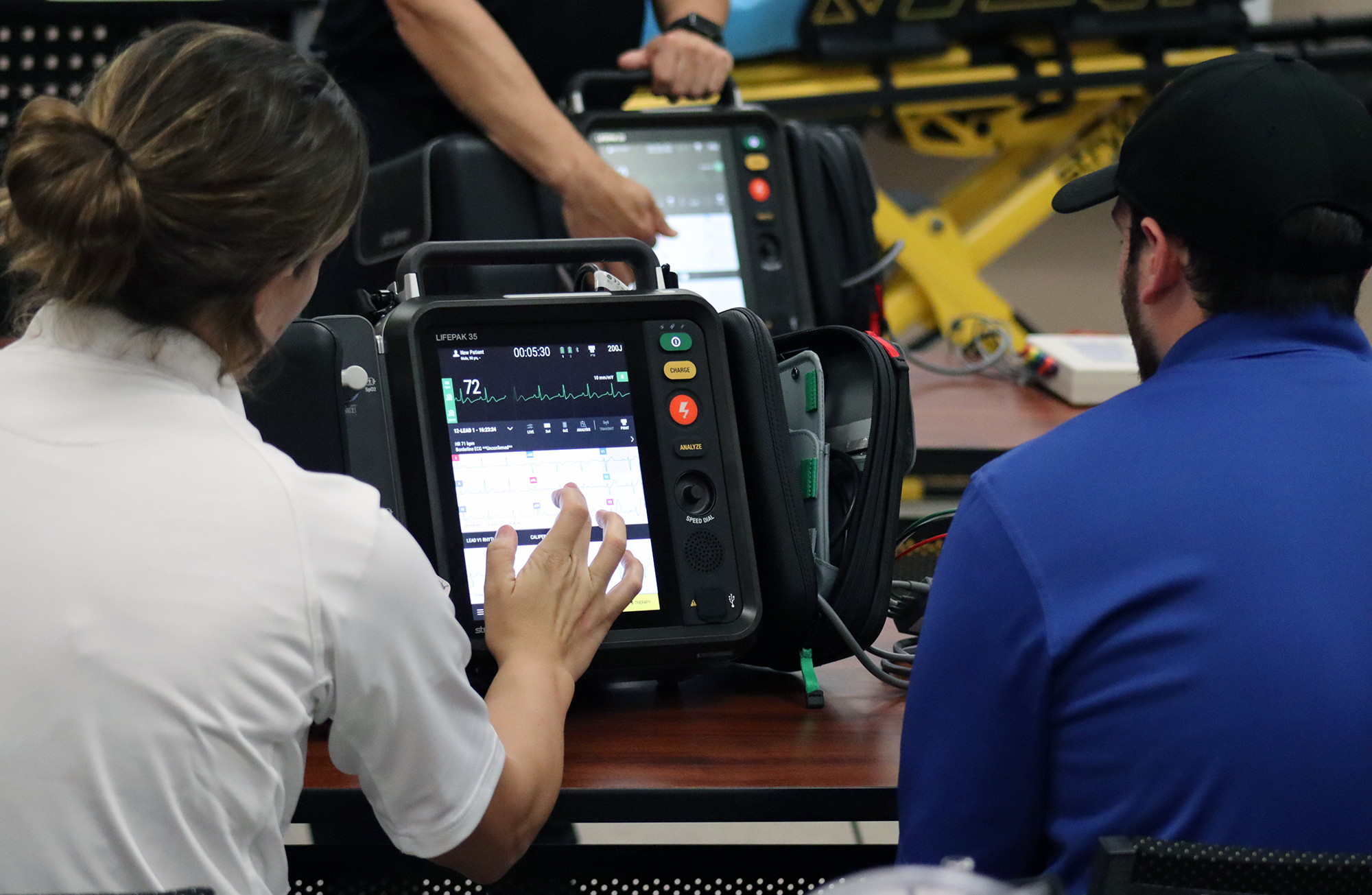Fairfield County EMS Becomes First Agency in SC to Fully Adopt New Lifesaving Tech

Paramedics and EMTs have a lot to focus on when treating patients. Heart rate, blood pressure and body temperature are just a few of the vital signs they need to monitor to stabilize patients and report to receiving hospitals. They do all this while also performing lifesaving procedures, administering medication and communicating with hospital staff. First responders in Fairfield County now have a tool to better aid them in their duties.
All emergency response units in the county have been outfitted with new state-of-the-art Stryker LifePak 35 monitors. According to Fairfield County EMS Chief Tim Martin, the 14 new units will take the guesswork out of the calculations EMTs and paramedics must make while treating patients in the field and will allow first responders to make better clinical decisions in less time.
“This is a technology that we have not seen before in a pre-hospital setting,” Martin said. “Before, we had to manually interpret that. This system here allows us not only to see what the heart is doing, it gives us a graph of where in the heart the damage is occurring.”
The LifePak cardiac monitor has a larger touchscreen than the devices previously used by the agency, making it easier to input patient information and to track cardiac activity and anomalies. The new monitor also has timers that assist EMTs with administering treatment and medications, which allows crews to keep focus on the task of treating their patient rather than watching a clock. It also features a metronome to help EMTs keep cadence for administering chest compressions.
“We do what we can to try to make our crew’s life and job easier,” said Deputy EMS Chief Sam Larabee. “Little things help them help people.”
 The new units, which are replacing older Zoll models that have exceeded their 10-year lifespan, allow first responders to livestream a patient’s vitals to a secured web browser that is accessible by EMS leaders, the medical control physician who oversees the county EMS agency and the medical staff at receiving hospitals.
The new units, which are replacing older Zoll models that have exceeded their 10-year lifespan, allow first responders to livestream a patient’s vitals to a secured web browser that is accessible by EMS leaders, the medical control physician who oversees the county EMS agency and the medical staff at receiving hospitals.
“We’ll be able to share this information now in real-time with multiple people to get better clinical outcomes,” Martin said, adding that the biggest impact would be the ability to recognize heart rhythm abnormalities earlier. “That information is then going to allow us to make quicker sound clinical decisions in the field so that we can get them to the appropriate hospital. Because not all hospitals have the same capabilities.”
Getting more accurate real-time information from first responders in the field can help receiving hospitals better prepare for the patient. Hospitals can activate the appropriate treatment teams based on the incoming information, which gets the patient the proper treatment more quickly.
Fairfield County EMS is the first agency in South Carolina to fully implement the new Stryker cardiac monitors, which were just released this summer, on all their emergency response units. The agency was able to fund the 14 monitors partially through a grant and in part thought a lease-purchase program approved by Fairfield County Council. The program allows the agency to spread the cost of the monitors over six years rather than footing the bill all at once. With each monitor costing around $55,000, flexibility in funding was vital to securing the new tech.
“For a rural county, we have to get creative with funding,” Martin said. “At the end of the day, we’re funded through taxpayer dollars. We have to be very smart with that money.”
All of the equipment used by Fairfield County EMS is manufactured by Stryker. It was a goal of the agency to have all equipment under the same manufacturing umbrella to streamline vendor and maintenance services. Martin says this will also result in significant cost savings.
Updating the device software is also a more streamlined process. Protocol changes can now be pushed out to all units from a single hub, rather than bringing each device in and manually updating the protocol. Not only are the monitors compatible with existing equipment, they also are designed to be compatible with future innovations.
The new monitors already have been outfitted with ports for future upgrades and equipment adaptations like adding the capability to conduct ultrasounds and administer medications via IV pump.
“It’s going to allow us to do amazing things. This is just the tip of the iceberg with what this machine can do and what this machine is going to be able to do,” Martin said. “The possibilities are going to be endless with this.”